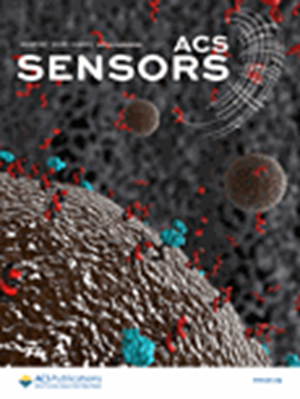A Novel “Double-Responsive” and “Dual-Targeted” Multifunctional Fluorescent Probe Monitors the Level Changes of ONOO– in Mitochondria during Cell Pyroptosis
IF 8.2
1区 化学
Q1 CHEMISTRY, ANALYTICAL
引用次数: 0
Abstract
Pyroptosis, often referred to as inflammatory necrosis, is a type of programmed cell death, characterized by the swelling of cells until the cell membranes rupture, resulting in the release of intracellular substances and a strong inflammatory response. Lipid droplets and mitochondria play important roles in cellular activities. A strong correlation exists between pyroptosis and mitochondrial dysfunction, which can be reflected through physiological functions and involves changes in the mitochondrial microenvironment and morphology. In this work, a “double-responsive” and “dual-targeted” fluorescent probe named WD-2 was constructed. It has excellent response performance to viscosity and ONOO–, and can simultaneously monitor the relevant levels in lipid droplets and mitochondria. Its remarkable targeting ability toward mitochondria and lipid droplets has been verified through colocalization experiments. In cell imaging experiments, the interaction between mitochondria and lipid droplets during nutritional stress was preliminarily studied. With the help of doxorubicin hydrochloride, the changes in the level of ONOO– in mitochondria during pyroptosis were explored, providing a new perspective for understanding the mechanism of this process.

求助全文
约1分钟内获得全文
求助全文
来源期刊

ACS Sensors
Chemical Engineering-Bioengineering
CiteScore
14.50
自引率
3.40%
发文量
372
期刊介绍:
ACS Sensors is a peer-reviewed research journal that focuses on the dissemination of new and original knowledge in the field of sensor science, particularly those that selectively sense chemical or biological species or processes. The journal covers a broad range of topics, including but not limited to biosensors, chemical sensors, gas sensors, intracellular sensors, single molecule sensors, cell chips, and microfluidic devices. It aims to publish articles that address conceptual advances in sensing technology applicable to various types of analytes or application papers that report on the use of existing sensing concepts in new ways or for new analytes.
 求助内容:
求助内容: 应助结果提醒方式:
应助结果提醒方式:


